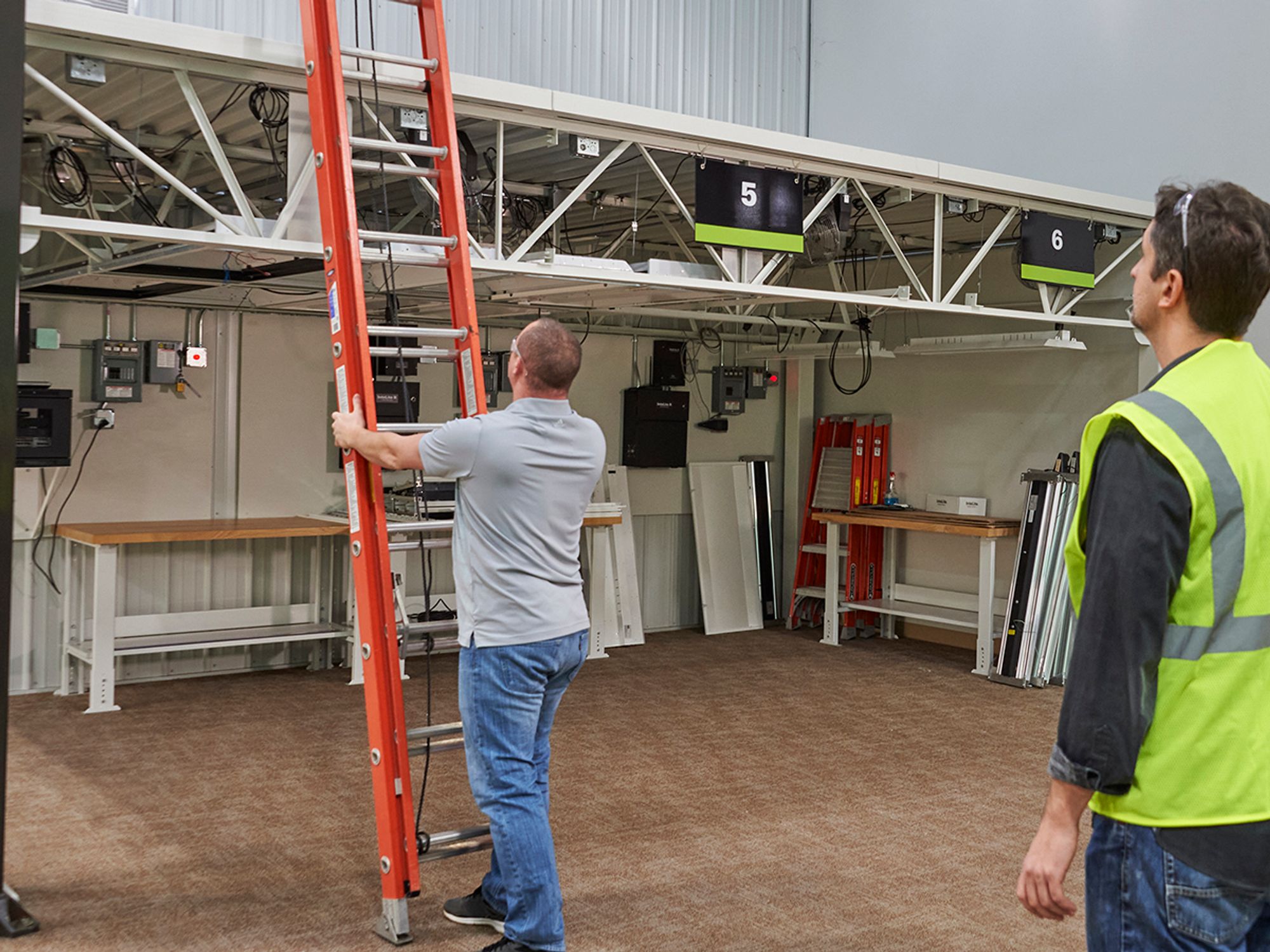Training requirements

- Employers must train employees on the proper use of ladders, correct climbing techniques, and how to use any safety systems that are in place.
- Employees should be trained to recognize fall hazards in the work area.
- Training must be conducted by a qualified person.
Employers are required to:
- Train each employee how to use personal fall arrest systems and/or ladder safety systems if used on a fixed ladder.
- Train employees to recognize fall hazards in the work area.
- Provide training and information in a manner that each employee understands.
- Retrain employees when deficiencies in performance or knowledge are noted, or when there are changes in the workplace or equipment.
Note: Training must be developed and conducted by a qualified person.
The Occupational Safety and Health Administration (OSHA) clarifies proper climbing techniques in 1910.23. The climbing techniques include:
- Employees must face the ladder while climbing up and down the ladder.
- Employees must maintain a three-point contact while climbing up and down the ladder. This requires that the employee firmly grasps the ladder with one hand at all times.
- Employees must not carry anything up or down a ladder that could cause them to lose their balance and fall.
In a letter of interpretation (LOI) dated June 5, 2019, OSHA clarified that the standard requires employees to use at least one hand to grasp the ladder when climbing up and down it, but does not require employees to grasp a specific portion of the ladder, such as the horizontal rungs. The intent is for workers to maintain three points of control while climbing. OSHA considers grasping the horizontal rungs preferable, but recognizes that there may be times when it is necessary for employees to hold the side rails.
Note: OSHA states in the preamble to the 2016 Walking-Working Surfaces final rule that the sliding hand technique is no longer allowed.
